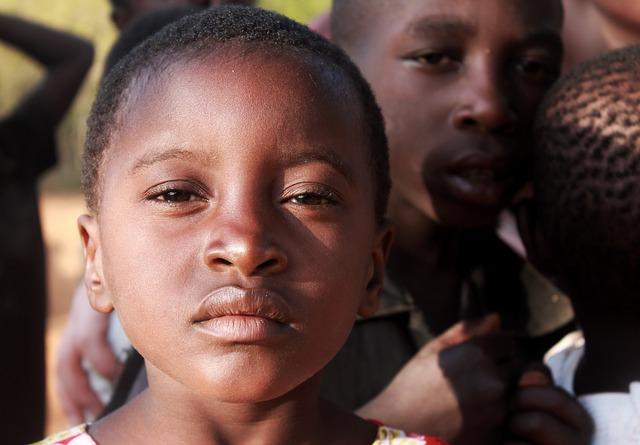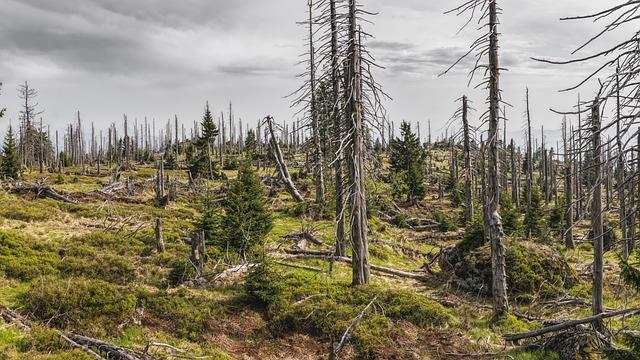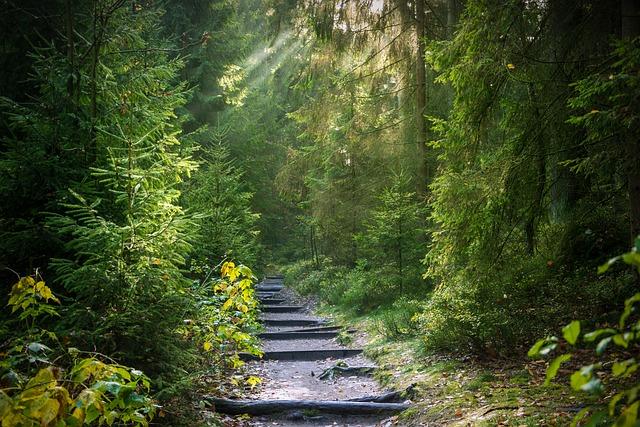- Introduction
- What is the African Forest Landscape Restoration Initiative (AFR100)?
- Benefits of Forest Restoration in Africa
- Success Stories of AFR100
- Challenges Facing AFR100
- Conclusion
- FAQs
- References
Introduction
The African Forest Landscape Restoration Initiative (AFR100) is a pan-African, country-led initiative aimed at restoring forests and landscapes across Africa. It represents a commitment by African nations to put 100 million hectares of land under restoration by 2030. This effort plays a critical role in combating climate change, increasing biodiversity, improving livelihoods, and securing water resources.
In this article, we will explore:
- What AFR100 is and how it works.
- The significant benefits forest restoration brings to Africa, including environmental and economic impacts.
- Success stories from AFR100, showcasing inspiring initiatives.
- The challenges that AFR100 faces and what must be done to overcome them.
By understanding the AFR100 Initiative, we can appreciate its vital role in Africa's sustainable future while exploring its successes, obstacles, and objectives for restoring degraded forest landscapes.
What is the African Forest Landscape Restoration Initiative (AFR100)?

(Image: Pixabay/@manuelamilani)
The African Forest Landscape Restoration Initiative (AFR100) was launched in 2015 during the United Nations Climate Change Conference (COP21) in Paris. Under the Bonn Challenge, which seeks to globally restore 350 million hectares of deforested and degraded lands by 2030, AFR100 is specifically focused on African landscapes, with a target of restoring 100 million hectares of deforested land.
This large-scale initiative is led by African governments with support from international organizations such as the World Resources Institute (WRI), the International Union for Conservation of Nature (IUCN), and funding partners. Countries actively participating in AFR100 pledge to implement restoration actions and practices tailored to their unique regional conditions.
Forest Landscape Restoration (FLR) involves the long-term process of regaining ecological health by reestablishing productive and biodiverse ecosystems within deforested or degraded areas. Restoration techniques vary, including agroforestry, natural regeneration, enrichment planting, and other methods aimed at balancing socioeconomic development with the ecosystem rejuvenation.
As an integral part of the African Union’s Agenda 2063, AFR100 provides solutions to threats like land degradation, biodiversity loss, declining water supply, and food insecurity—factors that heavily affect sub-Saharan Africa.
Benefits of Forest Restoration in Africa

(Image: Pixabay/@FelixMittermeier)
Forest restoration has a tremendous impact on the environment and communities. Here are some key ways in which restoring forests contributes to Africa's growth and sustainability.
Environmental Benefits
Restoring forests helps to reverse the damaging effects of deforestation and land degradation. Reforested areas contribute to soil health by reducing erosion, replenishing nutrients, and promoting ecosystems that store carbon. In addition, increasing tree cover mitigates the "heat sink" effect caused by barren lands, regulating local climate patterns while helping combat global climate change by absorbing CO2.
Resilient ecosystems support critical sources of clean water. As freshwater systems depend heavily on forested watersheds, restoring these ecosystems also has the potential to improve access to safe drinking water for millions who rely on natural water sources.
Socioeconomic Benefits
Beyond environmental gains, forest restoration delivers substantial socioeconomic benefits. Healthy landscapes are essential for sustaining agriculture. Agroforestry, a method that combines trees with crops and livestock production, allows farmers to work in harmony with nature by increasing yield, providing shade, and enriching soils naturally.
The potential to improve income through forest products—such as fruits, nuts, honey, medicinal plants, building materials, and sustainable timber—is another major benefit for communities involved in restoration projects.
Biodiversity Preservation
Africa is home to an extraordinary variety of wildlife, many species of which rely on forest habitats. By restoring these environments, AFR100 helps to conserve biodiversity, prevent species extinction, and maintain ecosystems that provide humans with essential ecosystem services such as pollination and seed dispersal.
Success Stories of AFR100

(Image: Pixabay/@viarami)
Across Africa, AFR100 has already made tangible progress. Below are noteworthy examples of how different countries are fulfilling their restoration commitments.
Rwanda: A Model of Commitment
Rwanda was among the first nations to commit to AFR100 with an ambitious goal of restoring two million hectares of its deforested lands. Efforts include a combination of agroforestry practices, natural habitat regeneration, and planting of indigenous species. Notably, Rwanda’s Gishwati-Mukura National Park, previously devastated by deforestation, is now experiencing forest recovery through concerted government and community efforts.
Ethiopia: Green Legacy Initiative
Ethiopia has been conducting a remarkable greening campaign with its Green Legacy Initiative, where billions of seedlings were planted. Ethiopia has set one of the highest AFR100 pledges—a total of 22 million hectares—to counter rapid deforestation, particularly in regions that are traditionally vulnerable to soil erosion and drought.
Madagascar: Harnessing Community-Based Action
In Madagascar, AFR100 works alongside local communities and conservation organizations to restore degraded mangrove forests. Mangroves protect coastal shores, mitigate floods, and serve as crucial hubs for marine biodiversity. Restoration efforts here directly involve local fishers, whose livelihoods depend on healthy aquatic ecosystems.
Ghana: Scaling Up Landscapes Restoration
Ghana has pledged to restore 2 million hectares of degraded land under AFR100. One of its key approaches includes scaling up sustainable cocoa agroforestry systems, helping to rehabilitate degraded farmlands while maintaining cocoa as a livelihood source for rural communities reliant on the crop for income.
Challenges Facing AFR100

(Image: Pixabay/@dkatana)
Despite promising developments, AFR100 faces numerous challenges that threaten its long-term success. Below are some of the most pressing hurdles.
Lack of Adequate Funding
Although several international organizations and private institutions have pledged financial support, the scale required to reach the goal of 100 million hectares is enormous. Insufficient funding limits the capacity to conduct extensive seedling planting, invest in monitoring technologies, and empower local communities to maintain restored landscapes.
Monitoring and Tracking Progress
One major obstacle is effective monitoring of restoration projects. Often, there is difficulty in assessing whether newly planted seedlings survive in the early stages and successfully contribute to overall ecosystem restoration. Lack of accurate data makes it hard to determine project outcomes and measure progress against initial commitments.
Climate Change Pressures
Ironically, climate change itself poses risks to AFR100 goals. Extreme weather events such as floods, droughts, and storms can devastate restored areas before ecosystems are fully established. Given that Africa is highly prone to climate crises, climate adaptation must be integrated into FLR efforts to sustain progress.
Social and Political Factors
Restoration often requires aligning local land-use practices with long-term environmental goals, which can sometimes spark opposition. Individuals and communities relying on existing unsustainable agricultural or logging practices may resist change due to economic needs. For AFR100 to thrive, political will, community involvement, and continued efforts for public education are essential.
Conclusion
The African Forest Landscape Restoration Initiative (AFR100) is an ambitious and hopeful project enlisting countries, local communities, and developmental agencies to salvage Africa's forests and landscapes. Its multi-faceted approach not only repairs ecosystems but also empowers communities through improved agriculture and income sources. While facing significant challenges, success stories from nations like Rwanda, Ethiopia, and Madagascar illustrate the potential for transformative change.
Ultimately, the goal of restoring 100 million hectares of degraded forests by 2030 is crucial to addressing land degradation, fighting climate change, and securing a resilient future for both nature and the people of Africa.
FAQs
What is the AFR100?
AFR100 is the African Forest Landscape Restoration Initiative, which aims to restore 100 million hectares of deforested and degraded land across Africa by 2030.
Who is funding the AFR100 initiative?
AFR100 is supported by various international organizations, including the World Resources Institute (WRI), the International Union for Conservation of Nature (IUCN), as well as donor governments and private foundations.
How does forest restoration help communities in Africa?
Restored forests improve agricultural yields, promote biodiversity, and provide economic opportunities through forest-related products like honey, wood, and medicinal plants, benefiting local communities economically and environmentally.
How many countries are part of AFR100?
More than 30 African countries have pledged their commitment to the AFR100 initiative as of 2023, contributing to collective efforts toward achieving restoration goals.

